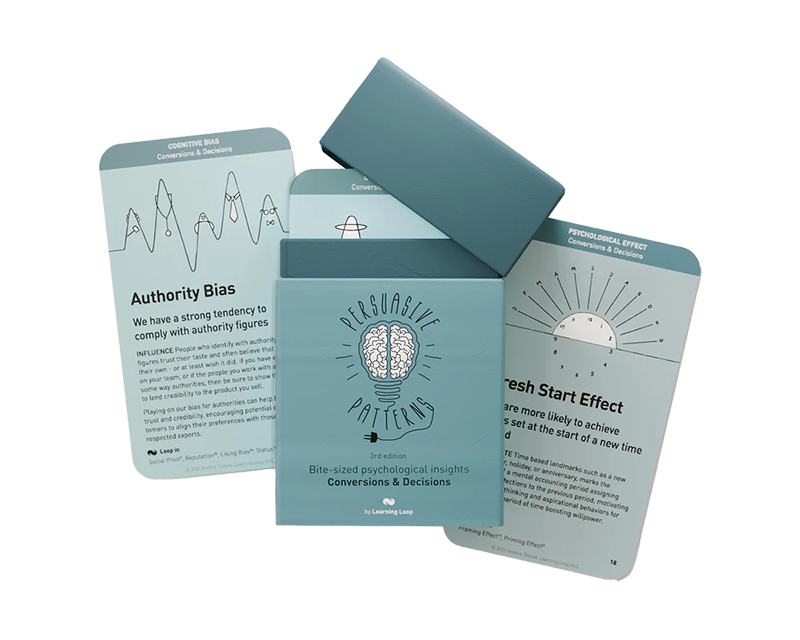Persuasive Patterns: Facilitation
Fresh Start Effect
We are more likely to achieve goals set at the start of a new time period
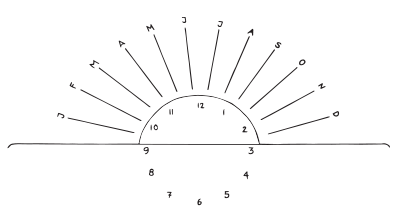
The “Fresh Start Effect” refers to the phenomenon where individuals are more likely to pursue and achieve their goals when they begin at the onset of a new time period. This effect leverages the psychological impact of temporal landmarks, such as the start of a new week, month, year, or even a birthday, to create a sense of a new beginning and renewed motivation.
Imagine a scenario involving a student, Emma, who is preparing to return to school after the summer break. This period represents a significant temporal landmark for Emma, aligning with the Fresh Start Effect, where individuals are more likely to set and pursue new goals at the start of a new time period (Dai, Milkman, & Riis, 2014).
As the new academic year begins, Emma feels a renewed sense of purpose and determination. She sets goals to improve her study habits and participate more in class. This motivation is not just a result of her personal ambition but is also influenced by the psychological impact of the “back to school” period. It acts as a fresh start, distancing her from any past academic shortcomings and focusing her on new achievements. This effect is similar to increased commitments to goals observed around new temporal landmarks in various contexts (Dai, Milkman, & Riis, 2014).
Consider a digital educational app that capitalizes on the Fresh Start Effect during the back-to-school period. Similar to Emma’s experience, the app sends notifications to its users at the beginning of the school year, encouraging them to set new academic goals.
This strategy is informed by research indicating that framing future moments as fresh starts can increase the likelihood of goal commitment (Beshears, Dai, Milkman, & Benartzi, 2021). The app uses this principle to prompt students to establish new learning objectives, leveraging the psychological impact of the back-to-school period. By aligning its features with this temporal landmark, the app effectively motivates students to engage more deeply with their educational goals.
In both scenarios, the Fresh Start Effect plays a crucial role in motivating individuals, particularly students, to set and pursue new academic goals, illustrating how this psychological phenomenon can be effectively utilized in both everyday life and digital educational tools.
The study
The study conducted by Dai, Milkman, and Riis (2014) provides a detailed examination of the Fresh Start Effect through the lens of gym attendance, a common measure for health-related aspirational behavior.
The study observed that gym attendance increased by approximately 33.4% at the start of a new week, demonstrating a significant Fresh Start Effect. This pattern was consistent across multiple temporal landmarks.
A similar trend was noticed with the onset of a new month and particularly at the start of a new year, where the increase was even more pronounced. The beginning of a new year saw an increase in gym attendance by around 50%, underlining the strong motivational impact of notable temporal landmarks like New Year’s.
While there was a marked increase in gym attendance during these fresh start periods, the study also noted that this boost in motivation and activity tended to taper off over time, indicating the challenge of sustaining these aspirational behaviors long-term.
These concrete results highlight the potency of temporal landmarks in motivating aspirational behavior, such as physical fitness goals, and underscore the importance of capitalizing on these periods for promoting positive behavioral changes.
Dai, H., Milkman, K. L., & Riis, J. (2014). The fresh start effect: Temporal landmarks motivate aspirational behavior. Management Science, 60(10), 2563-2582.
The Fresh Start Effect taps into a fundamental aspect of human psychology: our perception of time and our desire for self-improvement. This psychological pattern leverages temporal landmarks – specific moments in time that we perceive as new beginnings or opportunities for change. These landmarks, such as the start of a new year, a birthday, or even the beginning of a week, create mental demarcations, separating our past selves from our future aspirations. This psychological distancing from past failures or shortcomings provides a cognitive clean slate, a crucial aspect of the Fresh Start Effect.
These temporal landmarks often bring about a surge in motivation. The commencement of a new period like a new year or a new month is perceived as a fresh start, distancing us from our past failures. It’s a time when we are more inclined to engage in behaviors that align with our ideal self-image. The Fresh Start Effect capitalizes on this increase in motivation, making it an opportune moment for setting new goals or recommitting to ongoing ones.
Intrinsically tied to the Fresh Start Effect is the Optimism Bias. This bias leads us to believe that our future selves will be better or more successful than our current selves. When a new period begins, we’re more optimistic about achieving our goals, driven by the belief that future outcomes will be favorable. This positive outlook is a crucial driver for goal-setting and ambition during these fresh starts.
Temporal landmarks also serve as moments for self-reflection and identity reinforcement. These periods prompt us to reassess our personal goals and how they align with our self-identity. As we reflect on our aspirations and values, there’s a renewed motivation to pursue goals that resonate with our desired self-image.
The Fresh Start Effect is also about seeking cognitive consistency. We desire our beliefs, attitudes, and behaviors to be in harmony. The beginning of a new period provides an opportunity to realign our actions with our aspirations, thereby reducing Cognitive Dissonance and enhancing our commitment to our goals.
Another element at play is the Endowment Effect. As we mentally endow our future selves with positive attributes and successful outcomes, our commitment to the necessary actions to achieve these goals intensifies. This psychological ownership over our future selves and their successes further fuels our motivation during fresh starts.
The Fresh Start Effect can also lead to an escalation of commitment. As we start taking action towards our goals, especially at significant temporal landmarks, our psychological investment in these goals deepens. This increased commitment can be a powerful motivator, pushing us to sustain our efforts towards goal attainment.
The Fresh Start Effect and the Fogg Behavior Model
The Fresh Start Effect is closely related to BJ Fogg’s Behavior Model, which posits that behavior is the result of three factors: motivation, ability, and a prompt. The Fresh Start Effect naturally enhances the motivation component. The optimism and psychological separation from past failures can make tasks seem more achievable, affecting perceived ability. The temporal landmark itself acts as a natural prompt, initiating behavior change.
The Fresh Start Effect aligns with the peaks of motivational waves. These waves, representing fluctuations in a person’s motivation over time, peak at significant moments or events, often aligned with fresh starts. These peaks create the perfect conditions for undertaking challenging tasks or setting new goals.
Designing products with the Fresh Start Effect
When applying the Fresh Start Effect in product design or behavioral strategies, it’s essential to align interventions with the natural rhythms of these motivational waves. The timing of these interventions can significantly impact their effectiveness.
The first step in leveraging the Fresh Start Effect is to identify key temporal landmarks. These could be widely recognized dates such as New Year’s Day or more personal landmarks like birthdays or anniversaries. Recognizing these moments in the user’s life allows for the strategic placement of cues or prompts that encourage reflection and action.
Understanding user aspirations and aligning goals with these desires is crucial. Products or services that cater to self-improvement, such as fitness apps, educational platforms, or financial planning tools, can particularly benefit from this alignment. For instance, encouraging users to set new learning targets on an educational app at the start of a new school term can tap into their renewed motivation.
Crafting a narrative that emphasizes renewal and fresh beginnings can be instrumental. This narrative can be woven into marketing campaigns, user interface copy, or overall brand messaging, especially around key temporal landmarks. This approach helps users mentally distance themselves from past behaviors that they wish to change, reinforcing the idea of a new start.
Incorporating features that promote cognitive consistency can strengthen the Fresh Start Effect. This could involve designing user experiences that encourage actions aligning with the user’s self-perceived identity or aspirational self. For example, a health app might highlight activities that resonate with the user’s view of a healthier lifestyle.
Facilitate goal setting and reflection at these critical moments. Features like goal trackers, progress reports, and personalized reminders can remind users of their aspirations and progress, reinforcing their commitment to their goals.
Effective communication strategies that emphasize the potential for positive change and self-improvement can enhance the impact of the Fresh Start Effect. This might involve tailoring messages that resonate with users’ aspirations, making the prospect of starting anew more appealing.
While the Fresh Start Effect offers significant opportunities for influencing behavior, it’s vital to navigate its challenges thoughtfully. Not all users may respond similarly to fresh start prompts, and the effect may wane over time as the novelty of the new period diminishes. Continuous engagement and reinforcement beyond the initial fresh start period are essential to sustain motivation and progress towards goals.
Here are some practical tips and tricks for harnessing the Fresh Start Effect:
- Capitalize on temporal landmarks
Temporal landmarks, such as the start of a week, month, or year, can be pivotal in motivating aspirational behavior. For instance, fitness centers and luxury brands can create advertising campaigns that align with these fresh start moments. By doing so, they tap into the mindset of individuals who are more inclined to make positive changes during these periods. This approach is not limited to health-related goals but extends to career and educational aspirations as well (Peetz & Wilson, 2013). Align product features or campaigns with new periods like New Year, school terms, or even the start of a new month. For example, a financial management app could introduce budget planning features or special promotions around the New Year. - Highlight the ‘New You’
Emphasizing the concept of a ‘new you’ can be a powerful marketing strategy. For example, a gym promoting a New Year’s offer could frame it as an opportunity to start the year with a healthier lifestyle, thus reinforcing the desire for self-improvement (Dai, Milkman, & Riis, 2013). This technique leverages the natural inclination to see our current self as superior to our past self, inspiring decisions that align with this improved self-image. - Addressing the giver-uppers
Understanding the duration of fresh start motivation is crucial. While motivation may spike at the beginning, it often declines rapidly. Therefore, it’s important to follow up initial marketing messages with additional ones that reinforce the initial trigger. Combining the Fresh Start Effect with other biases, like the Goal-Gradient Effect, can help maintain long-term goal commitment and reduce drop-off rates. - Consider the frequency of actions
For behaviors that require a single action, such as making a donation or getting a vaccine, one well-timed fresh start advertisement may be sufficient. This approach should be tailored to the specific action and the typical motivation patterns associated with it. - Allow goal-setting
Design elements that encourage and facilitate goal setting at these key times. This could include setting new targets, tracking progress, or offering fresh challenges. - Narratives of renewal
Craft narratives within the product experience that emphasize new beginnings and self-improvement. This can be done through in-app content, push notifications, or email marketing that aligns with these fresh start periods.
Ethical recommendations
When applying the Fresh Start Effect in product design or marketing strategies, it’s important to navigate the ethical landscape carefully. Misuse of this persuasive pattern can lead to several pitfalls, impacting users negatively and potentially harming the company’s reputation.
One common pitfall is the exploitation of users’ vulnerabilities during times of change, such as New Year’s resolutions or major life transitions. Companies might use these periods to promote products or services that prey on users’ insecurities or unrealistic aspirations. It’s critical to avoid leveraging the Fresh Start Effect in ways that manipulate emotional vulnerabilities for profit.
Another ethical concern is setting unrealistic or false expectations. For instance, promoting quick-fix solutions or instant transformations can lead users to disappointment and distrust. Ethical use of the Fresh Start Effect involves honest communication about what users can realistically achieve with your product or service.
Companies should be wary of encouraging unnecessary consumerism under the guise of a ‘fresh start’ leading to impulsive buying decisions, contributing to financial strain and buyer’s remorse. Ethical practice requires a balanced approach that values users’ financial well-being.
Keep these considerations in mind as you integrate the Fresh Start Effect into your designs:
- Promote achievable goals
Align your use of the Fresh Start Effect with realistic, achievable goals. Providing honest and clear information about what your product or service can deliver respects the user’s intelligence and decision-making process. - Beneficial alignment
Ensure that any alignment with a fresh start genuinely adds value to users’ lives. This could involve supporting their goals, offering useful resources, or creating a community that fosters positive change. - Support and resources
If your product aligns with users’ fresh start goals, provide adequate support, such as customer service, community forums, or educational resources. This approach demonstrates commitment to users’ success and well-being. - Transparency and honesty in marketing
Transparent communication about your product’s capabilities and limitations fosters trust and long-term user loyalty. This approach respects the user’s right to make informed decisions based on accurate information. - Avoid overwhelm
Be cautious not to overwhelm users with too many choices or information at these fresh start moments. Overwhelm can lead to decision paralysis, negating the positive aspects of the Fresh Start Effect.
Real life Fresh Start Effect examples
Weight Watchers
Weight Watchers often rolls out new programs or promotional campaigns at the start of the New Year, tapping into the common resolution to lose weight. They offer specialized plans that start in January, encouraging new and existing users to embark on their weight loss journey.
Skillshare
Skillshare often launches campaigns at the start of a new year or season, encouraging users to pick up new skills or hobbies. They tap into the Fresh Start Effect by motivating users to see these periods as an opportunity for personal growth and learning.
Goodreads
The book tracking and social media platform encourages users to set annual reading challenges, especially promoting this feature at the beginning of the year, aligning with the Fresh Start Effect.
Trigger Questions
- What temporal landmarks are most relevant to our users?
- How can we align our product features with these fresh start moments?
- What narratives of renewal and improvement can we integrate into our user experience?
- How can we enable users to set and reset their goals in a way that feels personalized and empowering?
- Are we providing continuous support and motivation beyond the initial fresh start period?
- How can we cater to diverse fresh start moments, considering our varied user base?
Pairings
Fresh Start Effect + Goal-Gradient Effect
Combining the Fresh Start Effect with the Goal-Gradient Effect, where motivation increases as one gets closer to a goal, can be powerful. For instance, a fitness app might use the Fresh Start Effect to encourage users to begin a new workout regime at the start of a month and then apply the Goal-Gradient Effect by showing progress bars that fill up as they get closer to their monthly fitness goals.

We are more likely to achieve goals set at the start of a new time period

Our motivation increases as we move closer to a goal
Fresh Start Effect + Commitment & Consistency
People like to be consistent with what they have previously said or done pairs well with the Fresh Start Effect. A language learning platform could use this by encouraging users to set new language learning goals at the beginning of the year (Fresh Start Effect) and then sending regular reminders to help them stay consistent with these goals.

We are more likely to achieve goals set at the start of a new time period
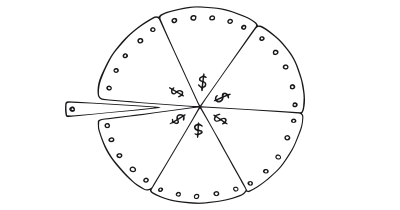
We want to appear consistent with our stated beliefs and prior actions
Fresh Start Effect + Feedback Loops
Integrating feedback loops with the Fresh Start Effect can enhance user engagement. For example, a budgeting app might use the start of a new year to encourage users to set financial goals and then provide weekly or monthly feedback on their spending habits and savings progress.

We are more likely to achieve goals set at the start of a new time period
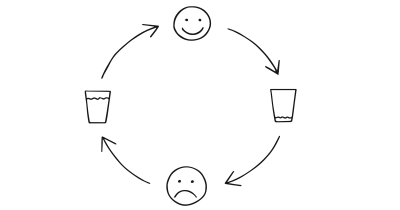
We are influenced by information that provides clarity on our actions
Fresh Start Effect + Sunk Cost Bias + Commitment & Consistency
The combination of the Fresh Start Effect, Sunk Cost Bias, and Commitment & Consistency can be a powerful tool in decision-making and behavior change. This synergy allows individuals and organizations to overcome the inertia of past investments (sunk costs) and align their actions with their current goals and values. Use the start of a new time period to encourage reflection and reassessment. This can be a moment to critically evaluate past investments and decisions, separating them from current and future actions. It’s an opportunity to ask, “Are our past commitments still serving our current goals?” Break down projects or goals into smaller, time-bound segments. This creates regular opportunities for reassessment and adjustment, ensuring that commitments remain aligned with current objectives and realities.

We are more likely to achieve goals set at the start of a new time period
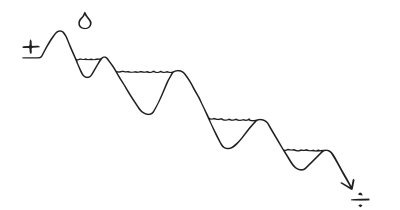
We are hesitant to pull out of something we have put effort into

We want to appear consistent with our stated beliefs and prior actions
Fresh Start Effect + Social Proof
Combining the Fresh Start Effect with Social Proof, where people copy the actions of others to undertake behavior in a given situation, can be powerful. A campaign that showcases how many people are adopting a new habit or goal at the start of a new year or month can encourage others to follow suit.

We are more likely to achieve goals set at the start of a new time period

We assume the actions of others in new or unfamiliar situations
Fresh Start Effect + Commitment Devices
Using commitment devices, which are mechanisms that enable individuals to lock themselves into a course of action, alongside the Fresh Start Effect can bolster commitment to new goals. For instance, a savings app might encourage users to set up automatic savings at the beginning of the year, capitalizing on their fresh start motivation.

We are more likely to achieve goals set at the start of a new time period
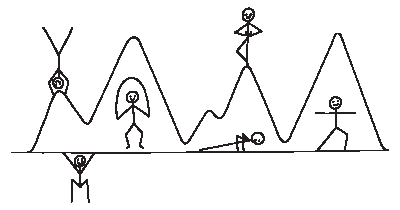
Make it easier for users to avoid acting against one's better judgment
Fresh Start Effect + Autonomy Bias
Autonomy Bias, where individuals prefer to have control over their actions, can be effectively paired with the Fresh Start Effect. Allowing people to choose their own goals or methods of improvement at the start of a new period can increase their commitment and likelihood of success.

We are more likely to achieve goals set at the start of a new time period
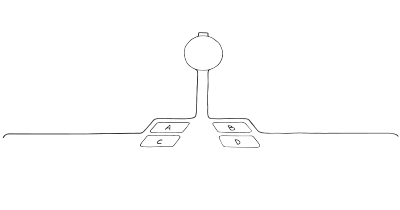
We strive to feel in control
Fresh Start Effect +
Framing
How goals and new beginnings are framed can significantly impact their effectiveness. For example, framing a new health program as a “new start for a healthier you” at the beginning of the year can be more motivating than simply presenting it as a set of activities or requirements.

We are more likely to achieve goals set at the start of a new time period
A brainstorming tool packed with tactics from psychology that will help you increase conversions and drive decisions. presented in a manner easily referenced and used as a brainstorming tool.
Get your deck!- The fresh start effect: Temporal landmarks motivate aspirational behavior by Dai, Milkman & Riis
- Success predictors [ by Norcross Mrykalo & Blagys
- Use the fresh start effect to boost your motivation
- Reaching goals with the science of the fresh start effect at Psychology Compass
- Fresh Start Effect
- Dai, H., Milkman, K. L., & Riis, J. (2014). The fresh start effect: Temporal landmarks motivate aspirational behavior. Management Science, 60(10), 2563-2582.
- Beshears, J., Dai, H., Milkman, K. L., & Benartzi, S. (2021). Using Fresh Starts to Nudge Increased Retirement Savings. Organizational Behavior and Human Decision Processes, 167, 72-87.
- Milkman, K. L., Beshears, J., Choi, J. J., Laibson, D., & Madrian, B. C. (2009). Using implementation intentions prompts to enhance influenza vaccination rates. Proceedings of the National Academy of Sciences, 108(26), 10415-10420.
- Gollwitzer, P. M. (1999). Implementation intentions: Strong effects of simple plans. American Psychologist, 54(7), 493-503.
- Fogg, B. J. (2009). A behavior model for persuasive design. Proceedings of the 4th International Conference on Persuasive Technology - Persuasive '09.
- Price, L. L., Coulter, R. A., Strizhakova, Y., & Schultz, A. E. (2018). The Fresh Start Mindset: Transforming Consumers’ Lives. Journal of Consumer Research, 45, 21-48.
- Milfeld, T., Haley, E., & Flint, D. (2021). A Fresh Start for Stigmatized Groups: The Effect of Cultural Identity Mindset Framing in Brand Advertising. Journal of Advertising, 50,
- Peetz, J., & Wilson, A. E. (2013). The Post-Birthday World: Consequences of Temporal Landmarks for Temporal Self-Appraisal and Motivation. Journal of Personality and Social Psychology, 104(2), 249-266.
- Oettingen, G., Pak, H., & Schnetter, K. (2001). Self-Regulation of Goal Setting: Turning Free Fantasies About the Future Into Binding Goals. Journal of Personality and Social Psychology, 80(5), 736-753.
